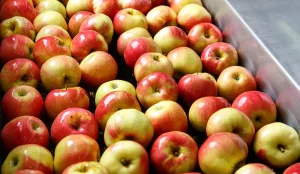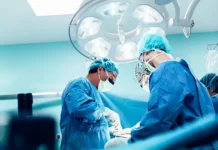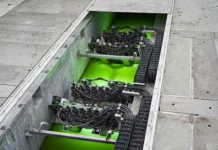IUVA Food and Beverage Safety Working Group
Dr. Keith Warriner, CPHAZ Department of Food Science, University of Guelph, Ontario
Peter E. Gordon, VP of business development, Bolb Inc.
Dr. Tatiana Koutchma, Agriculture and Agrifood Canada, Guelph, Ontario
 George Santayana’s famous aphorism, “Those who cannot remember the past are condemned to repeat it” seems appropriate when applied to the lack of effective action preventing continual SARS-Cov-2 transmission over the last 10 months. It appears that the disinfection lessons painfully learned over the last 20 years of dealing with the onset – and the subsequent suppression of SARS, MERS and swine influenza – were ignored, inadvertently sidelined or co-opted by nonexperts. As an unfortunate result, committed stakeholders may feel like we have collectively been sent 100 years back in time, fighting the 1918 Spanish flu.
George Santayana’s famous aphorism, “Those who cannot remember the past are condemned to repeat it” seems appropriate when applied to the lack of effective action preventing continual SARS-Cov-2 transmission over the last 10 months. It appears that the disinfection lessons painfully learned over the last 20 years of dealing with the onset – and the subsequent suppression of SARS, MERS and swine influenza – were ignored, inadvertently sidelined or co-opted by nonexperts. As an unfortunate result, committed stakeholders may feel like we have collectively been sent 100 years back in time, fighting the 1918 Spanish flu.
Public health agencies have been left scrambling to put vague, contradictory or outright counterproductive polices and recommendations in place that government regulators have been, in one way or another, inclined to oversee as they straddled the tenuous line between applied infection control and panic avoidance.
However confusing and deafening the cacophony of proposed solutions has been, it has been notable that the UV-C industry could pivot to offer responsible solutions, be they applying UV-C conveyor belt methods to decontaminating food delivery packaging, sanitizing large swaths of multi-touch areas in food handling facilities, reconfiguring 254 nm lamp or UV-C LED powered equipment to extending working life/recycling of N95 masks during the initial surges – demonstrating complex surfaces can be disinfected – or installing robust HVAC air treatment in food processing factories.
As we enter a second wave, the institutionalization of lockdowns – go-to tool of the epidemiologists – has become less convincing to economists and begrudgingly accepted by industry as a pause button rather than a comprehensive and sustainable transmission control measure.
The UV-C industry can help. The UV industry can widen its arc of rotation and bring several tools to aid the food and beverage sector, given that it has become further established how sensitive SARS-CoV-2 is toward ultraviolet light. Published studies and a multitude of in-house studies have reported that 1 J/cm2 can inactivate 106 TCID50 (median tissue culture infectious dose) of the virus.
Hence, ultraviolet-based technologies offer a promising chemical-free approach to severing transmission vectors within multiple arenas of human congregation, including food service venues and indoor-seating restaurants.
Potential applications in the restaurant and retail food sector include the introduction of in-room UV-C air disinfection that can recreate the minute pathogen loads of outdoor air, which is acknowledged to reduce the risk of acquiring the virus. Full room disinfection methods, their practical use honed over deployments in complex work environments, can be applied using affordable robots – another pivotal technology that can roam indoor areas during periods when areas are unoccupied.
UV-C technologies also can provide a route to the return to the movement of reducing single-use plastics in the food sector. One of the early victims of the pandemic was the return to plastic bags and ban of reusable cups in coffee shops. By applying UV-C-based methods, it will be possible for patrons to decontaminate reusable bags, cups or other personal items. Although the risk of acquiring the virus from such surfaces is considered low, the introduction of rapid and convenient object decontamination methods provides a perceived infection control that enables the food sector to return to its stated sustainability mission.
If there are any silver linings to the pandemic, one takeaway is the demonstration of the versatility of properly tested and vetted UV-C-based technologies in combating community infections. However, we do not condone unbridled UV-C for food safety fanaticism. With a crisis comes opportunity, and it is noteworthy that UV was marketed by some unscrupulous companies using fake sources or, worse, without regard for proven safety. Regulators must take back control by providing the food sector bona fide consultancy, fresh ideas and validated approaches. Paraphrasing Santayana, we want to avoid perpetuating dubious actions and redoubling fruitless efforts when we all have forgotten our original aims.
The IUVA Food and Beverage Safety Working Group explores the latest updates on the science-based validation and commercialization of UV-C technology for plant growth stimulation or suppression, nutrition enhancement, fungicide and pesticide reduction, wash water sanitation and postharvest disinfection, as well as use for nonthermal, low UVT beverage treatment.
Contact: Dr. Keith Warriner, [email protected]; Peter Gordon, [email protected]; Dr. Tatiana Koutchma, [email protected]





